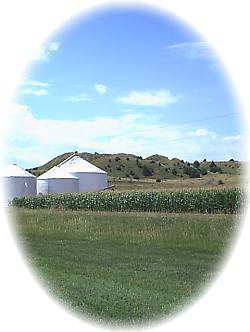Dawson County, NE
 Dawson County is located on what was the first transcontinental highway--the overland route to the west. The county was formed in 1871, just four years after the state joined the Union, March 1, 1867, and has played a major part in the development of Central Nebraska. The story of Dawson County's growth is important to you whether you live here, or in New York or California, Texas or Minnesota, because so much of our country's early history was shaped by the people who passed through here on the Oregon Trail, the Union Pacific Railroad, and later on the Lincoln Highway and U.S. Highway 30.
Dawson County is located on what was the first transcontinental highway--the overland route to the west. The county was formed in 1871, just four years after the state joined the Union, March 1, 1867, and has played a major part in the development of Central Nebraska. The story of Dawson County's growth is important to you whether you live here, or in New York or California, Texas or Minnesota, because so much of our country's early history was shaped by the people who passed through here on the Oregon Trail, the Union Pacific Railroad, and later on the Lincoln Highway and U.S. Highway 30.The Oregon Trail, the Overland Trail, and Routes of the Mormons--all passed through this valley enroute to the west, both sides of the river being used.
Aerial photographs still show the imprint of the wagon ruts in the fields south of the river. Although cultivation has erased most signs of the old Trails, the photographs still show them plainly, due to the different colors of dirt that blew into the old ruts. These will soon merge into other soil, obliterating the last visible vestiges of the old Trails, except for the very few original Pony Express Stations remaining.
The discovery of gold at Sutter's Mill, near what is now Sacramento, California, on January 24, 1848, touched off the greatest migration of history.
Paradoxically, the "Days of '49" really began in 1848. News spread slowly in those days, but travel was even slower.
But by 1849 the rush was on in earnest, and although the tide of immigrants diminished somewhat, it continued to flow up the broad Platte Valley until the completion of the transcontinental railroad, the Union Pacific, in 1868.
But even today the plains of the Platte continue to be the preferred route to -- and from -- the West. The Union Pacific is now flanked by Interstate 80 and Highway 30, while overhead fly the big airliners.
The early immigrants had the glitter of gold in their eyes, and failed to see the gold lying beneath the soil of the Platte Valley--the gold of agriculture and the water to make it pay.
Explore Dawson County
Lake Helen
Foresighted citizens approved a bond issue in 1889 for construction of a 12
Gothenburg, NE RecreationErnest A. Calling House
Ernest A. Calling, a pioneer businessman of Gothenburg, hired L.J. Anderson to build this distinctive Queen Anne style home in 1907. Born in Klipp, Sweden, in 1870, Calling emigrated to the United States in 1889
Gothenburg, NE National RegisterWillow Island Pony Express Station
The Pony Express Station which stands in the Cozad City Park was known officially as the Willow Island Station and was located just south of the present Darr Bridge. The station began in 1838
Cozad, NE Pony Express100th Meridian Museum
The 100th Meridian Museum, located adjacent to the Henri Museum, houses the antique touring coach used by William Howard Taft and his family when they toured Yellowstone Park in 1907
Cozad, NE MuseumsThe Sun Theatre
The Sun Theatre was built and used as an opera house from 1909-1926. In 1927, the theatre was opened by Glen VanWey. Children were charged 10 cents and adults 20 cents for silent movies accompanied by an orchestra. The 1930
Gothenburg, NE TheatresRobert Henri Museum and Historical Walkway
The Henri Museum and Historical Walkway features mementos from the boyhood home of world famous artist Robert Henri, including original art and sketches.
Cozad, NE Museums1320 Lake Avenue
James E. Norsworthy came to Gothenburg with his wife Sarah in 1889. In 1905 he built this lovely 2-1/2
Gothenburg, NE Historic HomesUnion Pacific Depot
On October 15, 1866, the Union Pacific Railroad track laying crews reached the "100th Meridian"
Cozad, NE Railroad HistoryHistoric Depot
In the years from 1863 to 1868 the railroad had become a certainty. During the five year period, the first operations of mapping, surveying, setting telegraph poles and planning the roadbed had been completed. The railroad through this territory was completed in 1868
Gothenburg, NE Railroad HistoryThe Country School
This one room country school was built around the year 1880, on a site nine miles north and west of the City of Cozad on land owned at that time by David Adle and Christiana Frost Adle. This school was called "The Adle School" because it was on Adle land, although it should have been called "
Cozad, NE Historic SchoolhousesVeterans' War Memorial
Located on the west shore of Lake Helen, this memorial is a reminder of sacrifices made by veterans and their families of all wars. The names listed commemorate local residents who gave their lives. World War I:
Gothenburg, NE MemorialsWild Horse Golf Club
Wild Horse Golf Club is the No. 3 rated affordable new golf course in the Nation for 1999 according to Golf Digest. This rolling sandhills course features 18
Gothenburg, NE Golf Courses